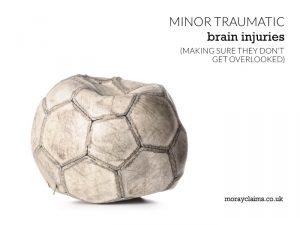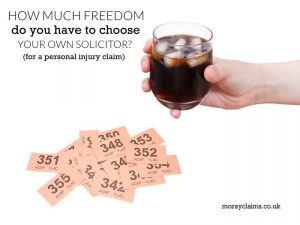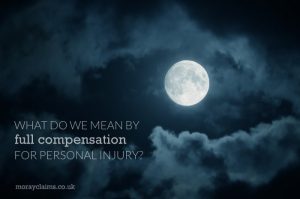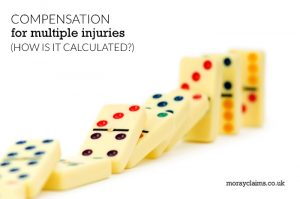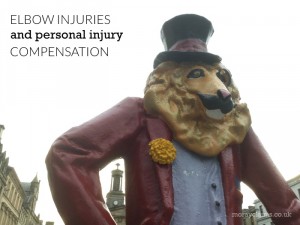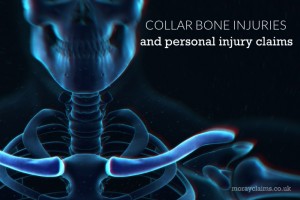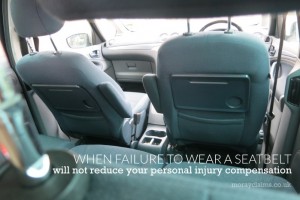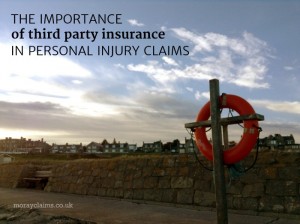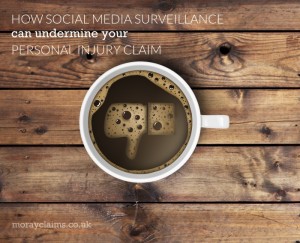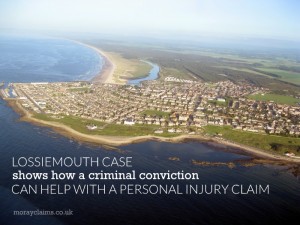One of the most outstanding English football centre forwards of the 20th Century tells of how, in February 1941, he received his call-up papers to the Royal Air Force. After his basic training, he passed on to the course set for a wireless-operator air-gunner. His training took him to numerous places across England. Finally, he was posted to Moray where he was to have an accident which could easily (at best) have ended his footballing career before it had even begun. He takes up the story in his 1949 autobiography, “Football Is My Game”. “It was while I was at Lossiemouth that I met with the accident which nipped my “career” as a W/op.A.G. in the bud, and prevented me from being sent abroad. We were on operational training; the Wellington (bomber aeroplane) caught fire, and down we went in a dive. We finished in a fir plantation. The pilot and bomb-aimer were killed. The navigator lost a leg. I got out alive with various injuries of which the worst was a head wound Continue Reading
Do you have freedom of choice of personal injury solicitor?
Humans have an overpowering need to return favours. This is one pillar of the psychology of persuasion explored in Robert Cialdini’s book, “Influence”. The rule of reciprocity is that we feel a duty to repay others in kind for whatever they have done for us. It’s powerful because it forms the basis of all societies: it allowed our ancestors to share resources securely, knowing that their favour would be returned later. If someone else does us a favour, we feel a psychological burden until we return it. We’re afraid of being labelled as a parasite, if we don’t. Many experiments have demonstrated this phenomenon. In one of these - at Cornell University in the early 1970s - Professor Dennis Regan demonstrated that people are so anxious to get rid of the burden of debt that they will perform much larger favours in return for small ones. In that study, a researcher – “Joe” – bought test subjects a 10 cent Coke as an unprompted favour and then later asked the subjects to buy raffle Continue Reading
What do we mean by Full Compensation for Personal Injury?
My all-time favourite cartoon characters are probably Calvin and Hobbes. Calvin is a young boy of about 6 years of age. To everyone else in the stories, Hobbes is Calvin's stuffed toy tiger. But, to Calvin, Hobbes is his walking, talking best friend – caught by means of a tiger trap baited with a tuna sandwich - who shares all his adventures. Many of these involve stressing out his long-suffering parents. Calvin is precocious in some ways but naive in others. The father of the creator of Calvin and Hobbes, Bill Watterson, was a lawyer. In the cartoon, Calvin's Dad is also a lawyer. I don't have a son called Calvin but we did call one of our cats 'Hobbes'. One comic strip has Calvin sitting, surrounded by what appear to be pots of glue and plaster. He is holding out a baby tooth that has just come out of his mouth. "Mom says the tooth fairy might give me 50 cents for this tooth," he tells Hobbes. "Wow!" replies Hobbes. "So I got an idea," continues Calvin. "I Continue Reading
Compensation for Multiple Injuries (How it’s calculated)
On 24 July 2017, the Boston Globe newspaper reported something which it appears came as a surprise to many people. Some had suspected the truth they exposed in their article, but not many. The subject was pedestrian crossings at busy road intersections. If you needed to cross the road, for example, in downtown Boston, you would press the “walk” button and wait patiently for the lights to change. Your assumption was that you set in motion an electronic process which reduced the time you would have to wait to get your opportunity to cross. As it turned out, however, this was an illusion. The buttons had been disabled. Pedestrians always had to wait a predetermined amount of time within the cycle of the lights. A spokesperson on behalf of the city of Boston explained that downtown was too congested with pedestrians and cars to allow any single person to influence the traffic lights’ cycle. This did not surprise everyone: one resident, who had suspected the buttons were Continue Reading
Claiming Compensation for Elbow Injuries in Scotland
The band, Elbow, reportedly got their name because of evidence that it is “the loveliest word in the English language”. The Singing Detective by Dennis Potter was a BBC television drama, which first aired in 1986. Mystery writer, Philip E. Marlow, is the main character. Through the pain of his skin condition, psoriatic arthropathy, and the associated fever, Marlow’s imagination runs riot while he is hospitalised with lesions and sores over his whole body – and he comes up with this escapist adventure about a detective. According to Marlow, in a scene from The Singing Detective, “E-L-B-O-W” is the loveliest word not only because of the sound it makes in the mouth but also because of the shape it makes on the page. The elbow joint is something which adds to the distinctive shape of the human body. A reasonable amount of twisting of the lower arm is made possible by the design of the elbow joint. Also, our ability to move the forearm and hand towards and away from the body Continue Reading
Collar Bone Injuries and Personal Injury Claims
According to Guinness World Records, some of the records broken most often include: Most apples dooked in one minute; Longest DJ Marathon; and Heaviest item lifted on the strength of glue alone. They mention that another frequently-broken record is that of Oldest living person – though the oldest recorded person ever remains French supercentenarian, Jeanne Louise Calment, who was 122 years and 164 days old when she died in 1997. If you look for discussion about the issue of “world records which are broken most often” on internet forums, “world’s youngest person” comes up a lot – that’s one we all held at one point, however briefly. The question “what gets broken most frequently?” comes up in relation to bony injuries when we’re looking at personal injury claims. Which bone in the human body is most likely to get broken? One serious contender for most-commonly-broken-bone is the collar bone or clavicle. In this article, we will take three angles on the collar Continue Reading
Ankle Injury Claims
A well-worn piece of writing advice says that everything reads better – and more memorably – if it is presented in groups of 3. Following the “Rule of 3” could mean: having three brief sentences in succession; using three friendly, joyful (but mysterious) adjectives to describe something; or limiting your lists to three bullet points (!) The ankle should be off to a good start in this context, given that there are 3 main bones in the ankle region. These are the talus – in the foot – and the tibia and fibula (in the leg). In this article, we are going to have a look at ankle injuries. Going back to first principles, we’ll start by defining what we mean by the ankle. Secondly, we’ll consider what are the most common types of ankle injury and their consequences. Finally, we will discuss the factors which affect the valuation of ankle injuries and the levels of compensation awards which tend to apply. 1. What do we mean by the ankle? It may seem an obvious question with Continue Reading
When not wearing a seatbelt will not reduce your personal injury compensation at all
The modern car seatbelt was invented by a former aviation engineer, whose experience included working on ejector seats. By 1959, cars had seatbelts but only two-point waist restraints. In a car accident, this often did the wearer as much harm as good. Volvo engineer, Nils Bohlin, created a design which anchored the straps low beside the seat. This meant that the geometry of the belts formed a “V” - pointing at the floor – and that the belt would remain in place and not shift under sudden loading. Such a significant advance in driver and passenger safety could have netted Volvo a fortune on the patent. Instead, they gave it away. They decided that the invention was so revolutionary that its value should not profit their company but be a free, life-saving tool. In the world of personal injury claims, if you fail to wear a seat belt and are injured in a road traffic accident, you don’t expect to be free from blame. As we’ve examined elsewhere on this website, UK personal injury Continue Reading
Why Insurance Is Crucial In Personal Injury Claims
On one level, the idea behind personal injury law is simple. You have suffered an injury as the result of the wrongful or negligent conduct of someone else. You seek financial compensation from them. The intention of the law is that the money you claim should somehow put you back in the position you would have been in if you had not been injured. But financial compensation is not like for like. It rarely, if ever, achieves the goal of making up for the injury losses you have suffered. This problem is most acute where the injuries are very serious. Money for the loss of a limb is never going to be a magic wand that reverses the effects of the injuries. With minor injuries, which could be described more as an inconvenience and where a full recovery is more likely, monetary compensation works better as a remedy but still imperfectly. “That personal injury claim was a nice wee earner and I’d happily have another one next week” – said no genuinely-injured person ever. Most personal Continue Reading
How Social Media Surveillance Can Undermine Your Personal Injury Claim
There are those who predicted that the years from 2010 to 2020 would become known as the "transparency" decade, in which no one would be able to "live a lie". It is perhaps not turning out to be as clear-cut as it might have seemed then, especially when we are having such issues with fake news and the apparent smokescreens created by certain people and organisations in positions of power. It is hard to remember that there was once a time when you did not always know what your friends were up to. A time long ago when, in order to hear their news, you would need to phone them or arrange to meet them face-to-face. Since Facebook began in 2004 and Twitter in 2006, there has been an explosion in the use of social media. On the internet, something like 1400 blog posts are produced every minute. Dozens of hours of video are uploaded per minute. And tens of thousands of images are shared every minute. Facebook data from May 2016 indicated that there were 36.45 million users in the Continue Reading
How a Criminal Conviction helps with a Personal Injury Claim
A personal injury claim arising from an incident which took place in a Lossiemouth pizza takeaway has provided a good example of how a criminal conviction can be used in a personal injury claim to pave the way for the claim to succeed. This is a procedural decision from the All-Scotland Personal Injury Court in Edinburgh. In this article we will consider three aspects of how a criminal conviction helps with a personal injury claim. Firstly, we will look at the law in relation to the use of criminal convictions in civil proceedings such as personal injury claims. Secondly, we will see how the reference to a criminal conviction in the Lossiemouth case helped the claimant establish that compensation should be payable to him. Finally, we will look at the question of whether it is ever possible for a person who is blamed for an accident/injury to argue their way out of it even if there is a criminal conviction against them. Continue Reading
The Cost Problem with Medical Negligence Claims (and ways to get round it)
If you are above a certain age, you may remember the following scene. Seated at a table in a San Francisco diner, Inspector Harry Callahan’s first bite of a hotdog is interrupted by the ringing of an alarm in the street outside. Muttering an oath, Inspector Callahan wipes his mouth and heads out to investigate. Stepping onto the sidewalk, he draws and cocks his .44 Magnum revolver. Its cylinder has 6 chambers, each holding one bullet. He sees a car draw up outside the bank across the road and, almost simultaneously, a man backs out of the bank, wielding a shotgun which is pointed into the premises. A bank robbery is in its final stages. Callahan warns the man with the shotgun to “halt” but the robber’s response is to spin and fire in Callahan’s general direction. Callahan downs the robber with a single shot. There are two men in the front of the getaway car. A third runs out of the bank and dives headlong into the vehicle through the open rear passenger window. The car Continue Reading
